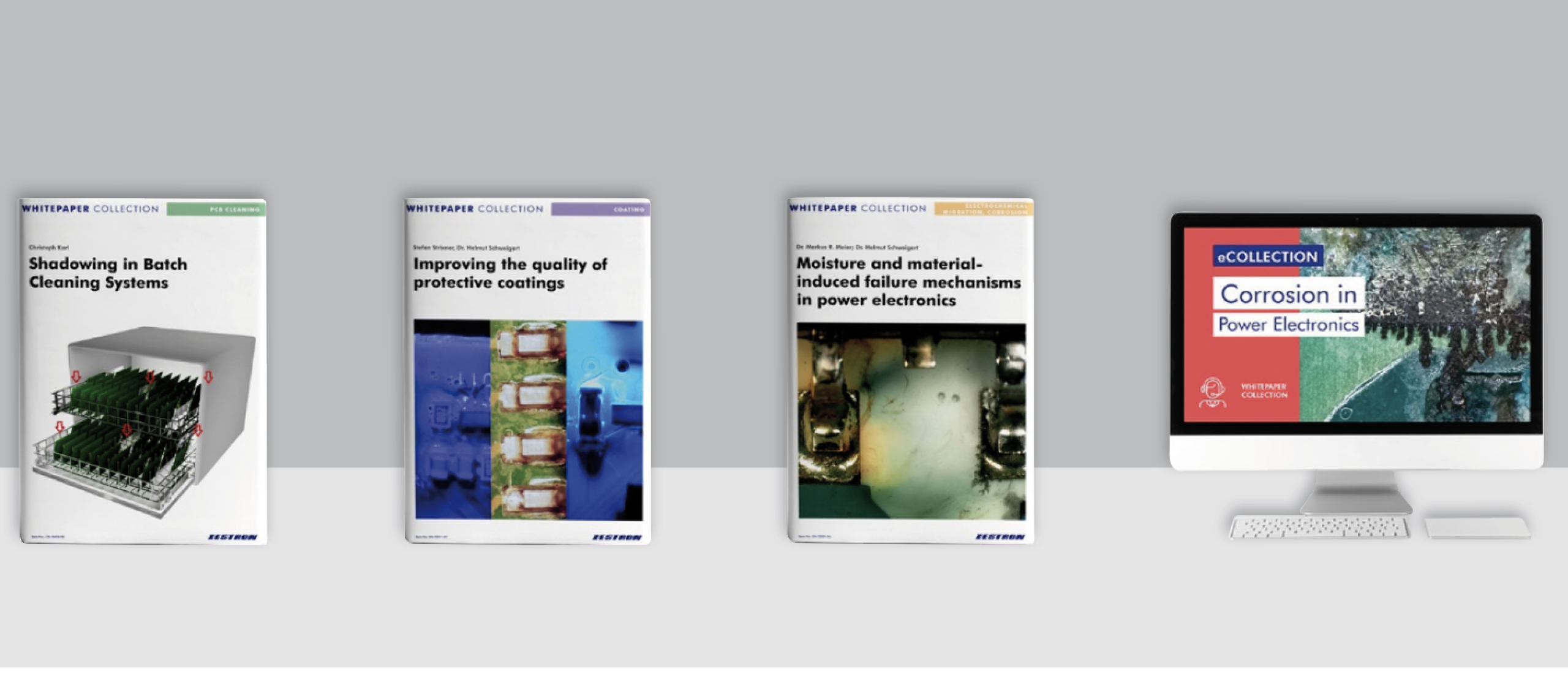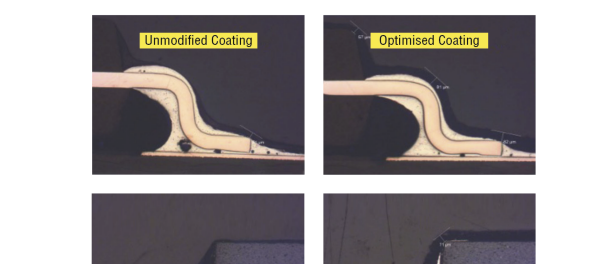Have you ever wondered whether assembly cleaning in batch systems inevitably leads to shadowing? Or how cleaning can enhance the quality of your protective coatings? How to prevent moisture and material-induced failure mechanisms in power electronics? In a nutshell, how to boost the reliability of the assemblies and components you use, thereby preventing expensive failures?
If these questions resonate with you, we have the perfect solution: a compilation of current technical articles that delve deeply into these topics and offer valuable insights. Request your individual selection of technical articles today!
Shadowing in Batch Cleaning Systems
PCB Cleaning
Cleaning electronic assemblies under soldered components with low stand-off heights of 40 μm poses a significant challenge in cleaning processes, where the primary objective is the complete removal of flux residues. Previously, flux residues under components with low stand-off heights could only be detected by removing the components, thereby destroying the assembly. This study introduces a specially developed non-destructive test using transparent assemblies to measure potential shadowing phenomena in spray-in-air (SIA) batch cleaning machines.
The study identifies specific differences in cleaning behavior among different machine types concerning shadowing, depending on the position within individual machines, and derives recommendations for process development.
Improving the quality of protective coatings
Coating
Protective coatings are extensively employed in applications requiring high reliability of electronics. Thermal shock tests verify the reliability of these coated electronics in the field. This study investigates the effects of specific production parameters on the occurrence of defects in conformal coatings during thermal shock tests. The findings highlight that production residues contribute to failures during thermal shock tests, and employing appropriate cleaning procedures positively impacts performance in these tests. The paper also ranks the significant contributions to achieving good thermal shock performance.
Moisture and material-induced failure mechanisms in power electronics
Electrochemical Migration
Modern, energy-efficient power electronics are pivotal in harnessing renewable energies, such as those used in wind turbines and e-mobility applications.
In these applications, power modules are often exposed to harsh environmental conditions, particularly moisture. Therefore, understanding the failure mechanisms and aging effects under these conditions is crucial to maintaining the reliability and lifespan of power modules, thereby ensuring the functionality of the entire system.
This whitepaper presents concrete case studies demonstrating the conditions necessary for electronic systems to transition from the basic electrochemical migration (ECM) failure mechanism to anodic-cathodic migration—known as AMP.
eCollection Corrosion in Power Electronics
Corrosion
Failures induced by corrosion mechanisms, such as electrochemical migration (ECM),
are a growing challenge for power electronics manufacturers. In this webinar, our expert
Stefan Strixner will highlight the failure mechanisms in power electronics, how they occur
in practice and the possibilities to avoid and/or remedy them. Use our knowledge package
on the topic of Corrosion in Power Electronics in the next four weeks and benefit from
the experience and expertise of our ZESTRON experts.



